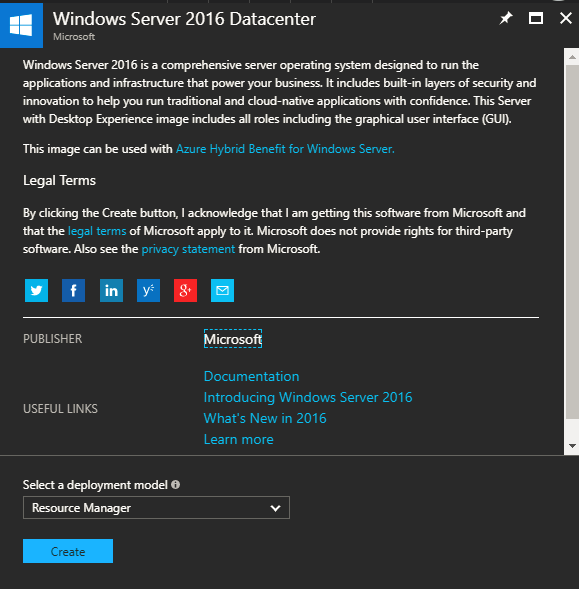Creating an Azure VM is a very straightforward process – all you have to do is follow the given steps:
- Navigate to the Azure portal and search for
Virtual Machines, as shown in the following screenshot:

Figure 3.1: Searching for Virtual Machines
- Once the VM blade is opened, you can click on
+Addto create a new VM, as shown in the following screenshot:

Figure 3.2: Virtual Machines blade
- Once you have clicked on
+Add, a new blade will pop up where you have to search for and select the desired OS for the VM, as shown in the following screenshot:

Figure 3.3: Searching for Windows Server 2016 OS for the VM

Figure 3.4: Selecting the deployment model
- Once the deployment model is selected, a new blade will pop up where you have to specify the following:
Name: Specify the name of the VM.VM disk type: Specify whether the disk...



